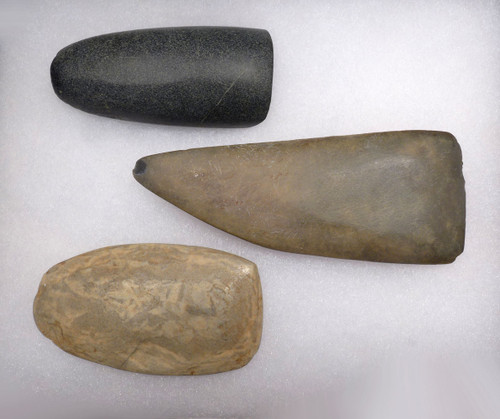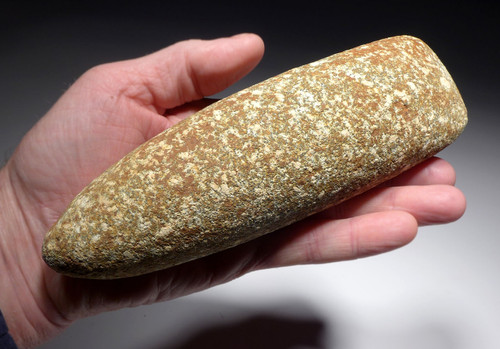Product Description
SEE MORE AFRICAN NEOLITHIC TOOLS
This is a set of two ground stone axes from Capsian African Neolithic Culture. The axes are of different designs but the stone material used to make them is the same. These were collected from the same site region. Interesting use wear is evident on both. The entire surface shows extensive pecking and grinding to form the axes. Extreme patina and mineral deposits from the desert exposure are evidence of their extreme age. There are nicks to the chopping end which are ancient.
This type of axe is classic to the Neolithic Period all over the world in every culture. Ground axes typify the "New Stone Age" (Neolithic) and their appearance ushered in this period and a change in axe design along with it. These completely ground axes are also called 'celts'. They are much more effective in chopping wood compared to flaked axes. Celts were either hafted to a wooden handle or set into the handle, sometimes using an antler sheath as a shock absorber as have been found in European sites. These axes were completely formed by rubbing a rough stone blank on gritty sandstone, using sand as an abrasive. The cutting edge and surface was finished on finer grained stone for a smoother polish. Similar to the European Neolithic ground and polished axes, the African Neolithic types were completely ground to form. The cutting edge of the axes are also similar to their European counterparts in that they are ground to form a sturdy chopping edge and easily resharpened in the same manner.
 US DOLLAR
US DOLLAR
 EURO
EURO
 AUSTRALIAN DOLLAR
AUSTRALIAN DOLLAR
 CANADIAN DOLLAR
CANADIAN DOLLAR
 POUND STERLING
POUND STERLING
















